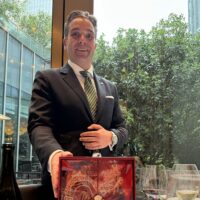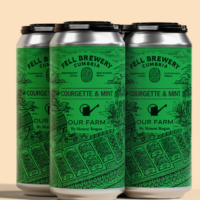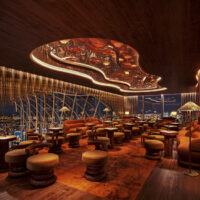
Both Perrier-Jouët and Moët & Chandon use an equal amount of Pinot Meunier in their brut non-vintage as Pinot Noir – 40% – and just 20% Chardonnay. Created in 1869, Moët Imperial is characterised by its fruitiness and vivacity. Cellar master Benoît Gouez works with more than 100 base wines and up to 30% reserve wine to create a final blend that offers notes of green apple, white flowers, peach and pear. Perrier-Jouët’s Deschamps, meanwhile, works with Pinot predominantly from the Montagne de Reims and the Marne Valley, the latter of which is also the source of his Meunier.
Two maisons that share an identical grape blend but maintain their own defined house styles are Charles Heidsieck and Louis Roederer, both of which craft their brut non-vintage from 40% Chardonnay, 40% Pinot Noir and 20% Pinot Meunier. Roederer’s Brut Premier gains richness and complexity from the inclusion of 15% of reserve wines that have been aged in oak from between two and six years. While the minimum ageing time for brut NV is 15 months, Roederer’s chef de cave, Jean- Baptiste Lécaillon, insists on resting his for four years on its lees and a further six months in bottle, leading to a fizz that is both fresh and and weighty, with notes of apple, cherry, brioche and almond.

One of the last houses to launch a brut non-vintage, Charles Heidsieck’s Brut Réserve didn’t reach English shores until the 1960s, with the house traditionally favouring vintage releases. Charles Heidsieck is unique in its consistently high use of reserve wines in its brut NV.
Cellar master Cyril Brun includes 40% of reserve wines in his blend each year, made up of equal parts Chardonnay and Pinot Noir from up to 12 vintages that have an average age of 10 years. This high percentage of reserve wine, coupled with five years’ lees ageing, gives the fizz a level of richness and complexity you would usually only expect to find in much older Champagnes.
In a single glass you’ll find everything from apricot and almond to plum, pistachio and pastry flavours. Brun’s goal is to successfully marry freshness and complexity year in year out. “Reserve wines are the quintessence of consistency, but Mother Nature can sometimes give you a harvest that is already very similar to the house’s style, which makes the job easier.
To be well prepared for the future, I have to make sure I have enough diversity among the reserve wines to be able to face any particular type of harvest that comes my way,” he says.
“The biggest challenge is trying to reproduce the same wine with new components each year. You’re constantly thinking about the present and the future at the same time, keeping some of the best wines aside as reserve for the future, while making exactly the wine you want to make at that moment.”
His predecessor, Thierry Roset, refined the style of the blend during his tenure, shrinking the number of crus used in the blend from more than 100 to 50. “As a result, we gained more precision and texture in the blend,” says Brun, who sources his Chardonnay predominantly from Oger and Vertus, and Pinot from Charles Heidsieck Brut Réserve has one of the highest dosage levels of a brut NV, at 11g/l, along with Louis Roederer Brut Premier.
Pol Roger is one of the few houses to use a blend of equal parts Pinot Noir, Pinot Meunier and Chardonnay, sourced from 30 crus in the Montagne de Reims, Marne Valley and Côte des Blancs, with Pinot Noir providing the power, Meunier the freshness and Chardonnay the finesse. Pol Roger Brut Reserve boasts notes of green apple, white flowers, brioche and hints of honey.
Like Charles Heidsieck, Pol Roger was late to the brut non-vintage game, first releasing its ‘white foil’, as it came to be known, because of the colour of the foil used on the neck of the bottle rather than the gold used on its vintage wines, in 1956, by request of Pol’s then UK importer, the Reuss brothers. Shortly after its release, ‘white foil’ became popular with British regiments such as the King’s Hussars and the Queen’s Royal Lancers, and its army associations continue to this day.
“It’s quite hard to achieve a consistent house style,” says cellar master Damien Cambres. “The transmission of knowledge and expertise to the next generation is integral to maintaining the Pol Roger style. A vintage cuvée is the expression of a very good harvest, while the major challenge for brut non-vintage is to make an excellent and consistent wine with different harvests every year. During the final blends, the priority is always given to the NV.”
Chardonnay to the fore in their brut non- vintage blends, the former using 40% and the latter 45%. Best known for its blanc de blancs, Ruinart also uses a high proportion of Chardonnay from the Côtes de Blancs in its R de Ruinart brut non- vintage, including around 40% in the blend each year. Cellar master Frédéric Panaïotis aims for the Chardonnay to shine through in the wine, imbuing it with a floral character, mineral core and notes of nectarine, greengage and blossom.




